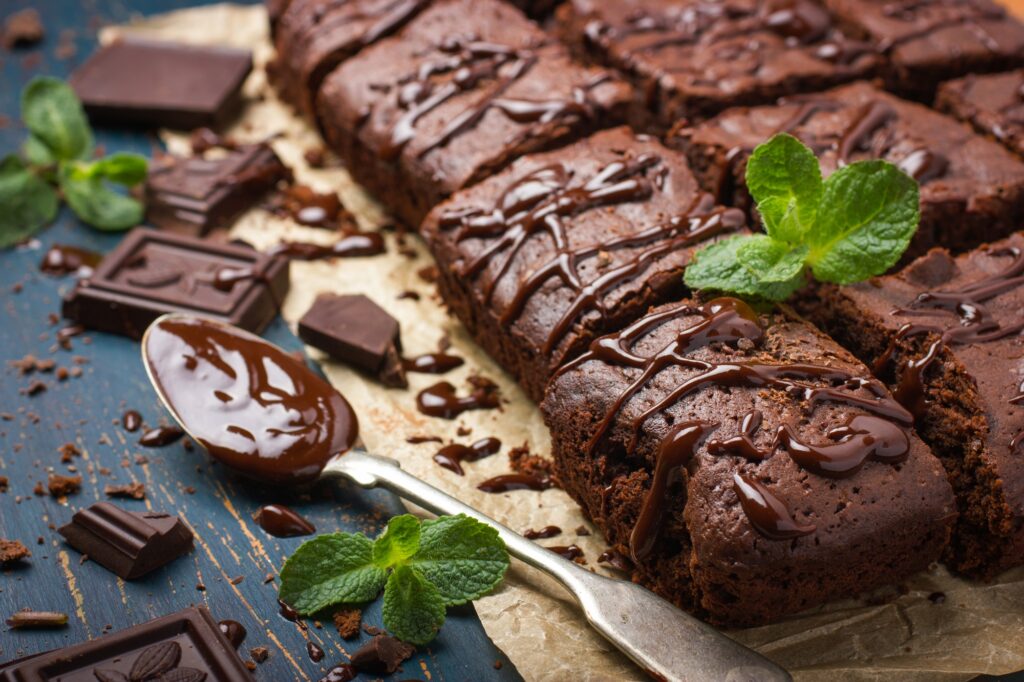Some people are born with a silver spoon in their mouth. I was born with a chocolate one.
I’m not alone.
The global chocolate market is worth a paltry $138.5 Billion. Each European munches on a yearly average of 24 pounds. Americans consume 15 pounds a year or the equivalent of a thanksgiving turkey.
I rather eat chocolate than turkey.
What would life be like without Godiva, Hershey kisses, hot fudge, and valentine’s hearts? Imagine a world without Oreos and the most popular chocolate in the world, snickers (named after a horse not a giggle).
There’s an old saying – nine out of ten people love chocolate. The tenth one always lies.
Chocolate is part of human history. 2,500 years ago The Mayan people called it the “drink of the Gods.” sixteenth century Aztec ruler, Montezuma, was known to drink 50 cups of chocolate a day. Marie Antoinette (of “let them eat cake” fame) was reported to travel with her personal chocolatier in the eighteenth century. Today, the wife of French President Emmanuel Macron (Brigitte Trogneux) is a chocolate heiress and The White House gives out commemorative packs of red, white, and blue chocolate M&Ms.
There’s no denying it – chocolate is on our brains.
Studies show that chocolate causes a more intense buzz than passionate kissing – and lasts four times longer. Casanova, in the eighteenth century, used chocolate as an aphrodisiac. A study of Harvard graduates found people who eat chocolate live longer than people who don’t. No surprise there.
WebMD reports that chocolate can be healthy – particularly dark chocolate. The purer and darker the chocolate the greater the health benefits. It’s full of flavanols that help protect you against inflammation, and lowers bad cholesterol and blood pressure. Of course when you add different fillings like caramel and marshmallows, it’s not so healthy. And when you devour a family sized bag of peanut butter cups in one sitting . . .
Still, chocolate is my favorite anti-depressant and facial.
Chocolate means love. Just check out Valentine’s Day, when people buy 400 million pounds of the stuff. It also stimulates creativity – chocolate truffles, chocolate mousse, and the infamous Mexican mole sauce – a combination of hot chilies and chocolate. These days you can get chocolate in flavors like spicy Tabasco, squid, and uncured bacon.
It’s not all tasty news. Chocolate comes from cacao trees – one of the least sustainable foods we eat. According to Well+Good, three quarters of the world’s chocolate is produced in Ghana, the Ivory Coast, Nigeria, and Cameroon. Deforestation is often used to grow more cacao. Cacao trees grow in land around the equator. Climate change brings higher temperatures and droughts, making it difficult for cacao trees. Bill Guyton, Executive Director of the Fine Chocolate Industry Association says in Well+Good, “if global warming continues at its current rate, future generations may miss out on chocolate altogether.”
A world without chocolate? Unimaginable. What would happen to Presidential advice to “eat some chocolate chocolate chip [ice cream]?” What would happen to Wispa Gold the most expensive chocolate in the world ($1,628)? What would happen to hot fudge sundaes or Max Brenner’s chocolate “retail therapy”?
Can you picture life without Nestle’s Crunch, Mars Milky Ways, and Hershey’s Kit Kats?
Fight climate change and save our chocolate!






Thanks Jeri for a great read. I am a chocolate convert- never ate it until my late teens, now, nearly 50 years later, can’t go a gay without it. I feel validated by your insights.
Great article! That was a hard sell on climate change 🙂
Wow! Who knew chocolate had such a rich history? If anyone needs another good reason to fight climate change, chocolate is a great one!!